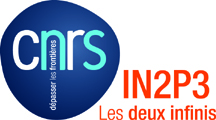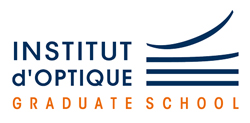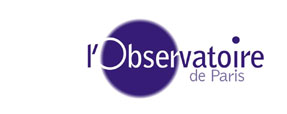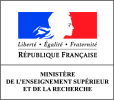ELEVENTH INTERNATIONAL SYMPOSIUM is sponsored by the following institutes
APC (Paris 7 University) - Hosting the conference
The Conference will be hosted by University Paris VII Diderot Campus, APC Laboratory
APC (AstroParticle and Cosmology) is a new Institute in Paris devoted to particle astrophysics and csomology. At a time where one expects a large amount of data in this| active field, it seemed apropriate to create a place where the different communities involved (astrophysicists, particle physicists and theorists) would work in close collaboration. This is the ambition of the APC Institute.
The scientific activities of APC are centered around three domains : High energy astrophysics, Cosmology, Neutrino, Theory, Data processing, Photodetection
IN2P3
National Institute of Nuclear and Particle Physics (IN2P3)
The institute’s mission is to develop and coordinate research carried out in the field of nuclear and particle physics. Scientific fields: particle physics, nuclear and hadron physics, astroparticles and neutrinos, research downstream of the electronuclear cycle, research and development for accelerators, computing grids...
Ecole Normale Supérieure Paris (ENS)
The physics department at ENS has two essential missions, research and teaching. Its research activities are performed in five laboratories, covering a wide range of fundamental physics:
- The Laboratoire Kastler Brossel deals mainly with matter-field interaction, quantum optics and quantum information, laser cooled atoms and degenerate quantum fluids.
- The Laboratoire Pierre Aigrain works on condensed matter physics, mesoscopic systems and optical properties of semiconductors.
- The Laboratoire de physique statistique deals with complex systems, non-linear physics, wetting and biological system properties.
- The Laboratoire de physique théorique works on quantum field theory, statistical physics, particle physics and unification theories, disordered systems theory and applications to condensed matter, optimization and biophysics
- The Laboratoire de radioastronomie, part of the LERMA laboratory hosted at ENS, is focused on the observation and theoretical understanding of the large structures in the Universe (galactic magnetic fields...) Some research themes are addressed jointly by teams from different laboratories. This is particularly so for the application of physics to biological problems, a rapidly growing field at the department. There are also strong links with the other scientific departments of ENS. Detailed information on this thriving scientific activity can be found in the WEB sites of the laboratories.
Institut d'Optique (Palaiseau)
Laboratoire Charles Fabry de l'Institut d'Optique has been established as a joint laboratory between Institut d'Optique Théorique et Appliquée (IOTA) and "Centre National de la Recherche Scientifique" (CNRS), in cooperation with Université Paris-Sud. The nationally endorsed research component of Institut d'Optique, it is one major component of IOTA together with the Engineering School, Ecole supérieure d'Optique. Most faculty members of the School are active in research in the Laboratory. Located on the premises of the University at Orsay, it enjoys a particularly active and rich scientific and technological environment in the Orsay/Saclay/Palaiseau area. Late in 2006 it will move to new building at Palaiseau, next to Ecole polytechnique.
In this context, it is logical for the Laboratory to cover a broad range of optical research, both fondamental and applied, with emphasis on experimental aspects. Skills covering essentially all of optics are highlighted by the timely research topics conducted by six research groups
Observatoire de Paris Meudon (OBSPM)
Established in 1667, the Observatoire de Paris is the largest national centre for research in astronomy. It counts among its staff thirty per cent of all French astronomers, who carry out research in the institution’s seven laboratories. Located in the Paris, Meudon and Nançay sites, these are joint research units with the CNRS and often with major scientific universities in the Paris region.
Research carried out at the Observatoire de Paris covers the entire spectrum of contemporary astronomy and astrophysics: - the study of the Sun and the Sun-Earth relationship; - planets and planetary systems; - star formation and the interstellar medium; - galaxy formation and evolution; - astroparticles and cosmology; - space and time metrology; - history and philosophy of science
Discinnet Lab
Research Experiments Targeted Results
Discinnet goal is to facilitate research projects communication from inception to publishing and from disciplinary clusters to interdisciplinary networking
CEA
CEA is a French government-funded technological research organisation. A prominent player in the European Research Area, it is involved in setting up collaborative projects with many partners around the world.
Discinnet goal is to facilitate research projects communication from inception to publishing and from disciplinary clusters to interdisciplinary networking
Ministère de l'enseignement supérieur et de la Recherche







